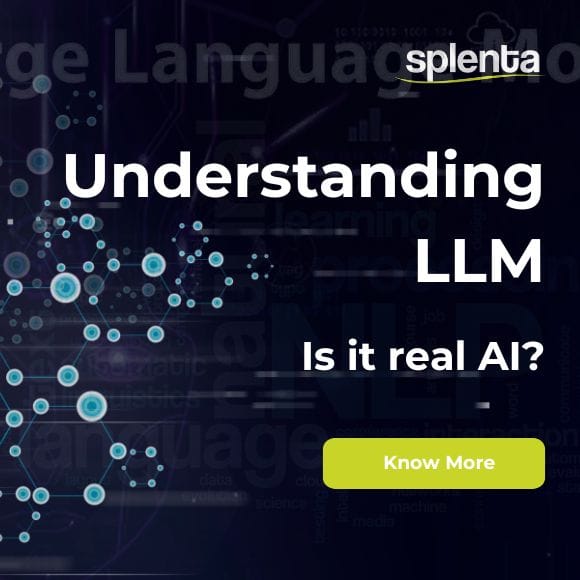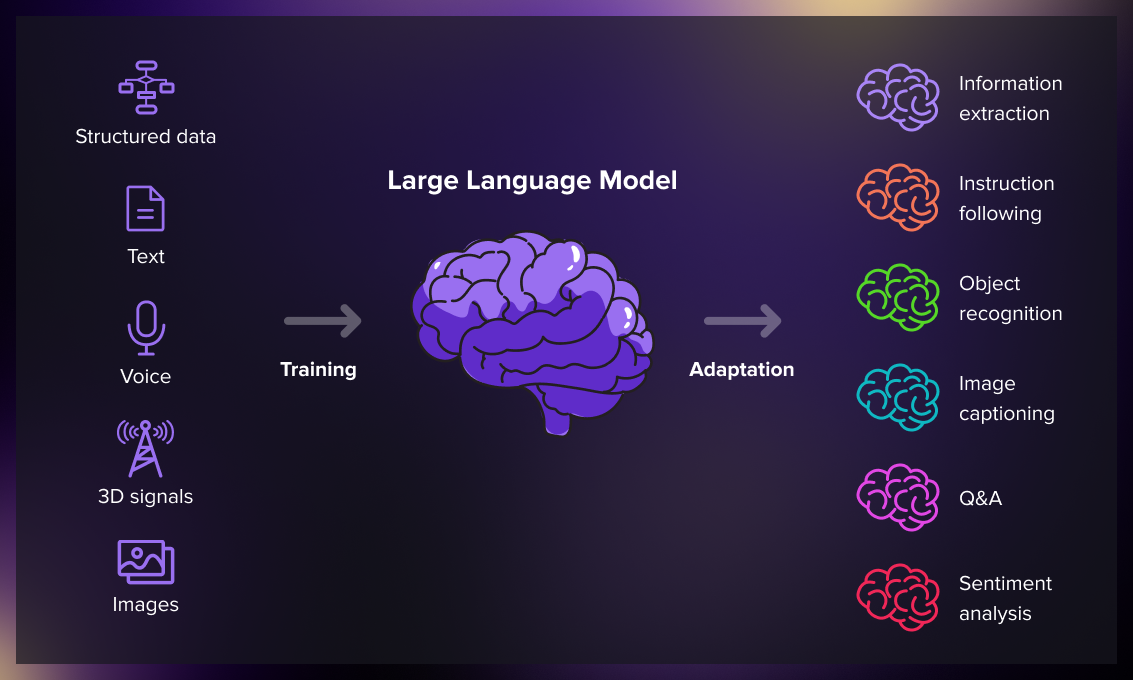
In today's rapidly advancing technological landscape, the term "AI" has spread throughout every corner of our digital lives. However, amidst the buzz surrounding Artificial Intelligence (AI), there lies a fundamental question: What truly defines AI, and does the emergence of Large Language Models (LLMs) signify a breakthrough? Let's embark on a journey to demystify this intricate subject matter, free of complex language and technical jargon. Our exploration will unveil the essence of LLMs and their profound significance within the realm of artificial intelligence, shedding light on their transformative potential and paving the way for a deeper understanding of the evolving technological landscape.

Decoding the AI Buzzword: What Exactly is AI? Let's Break it Down in simpler Terms
Artificial Intelligence, often abbreviated as AI, represents a groundbreaking field in computer science focused on creating systems capable of mimicking human intelligence. These systems are designed to undertake tasks that traditionally necessitate human cognitive abilities. From interpreting natural language and recognizing intricate patterns to making informed decisions and refining their actions based on past experiences, AI encompasses a diverse array of capabilities. Key techniques employed within AI include machine learning, which allows systems to learn from data and improve performance over time; natural language processing, which enables computers to understand and generate human language; and neural networks, which model the human brain's structure to facilitate complex problem-solving and decision-making processes. In essence, AI endeavors to equip machines with the capacity to reason, learn, and adapt, thereby bolstering their efficiency and effectiveness across various domains.
Unraveling LLMs: Unleashing the Power of AI's Linguistic Giants
Large Language Models (LLMs) stand as pioneering AI models specifically crafted to comprehend and produce human-like text. These models undergo rigorous training processes utilizing extensive datasets, enabling them to elaborately grasp the nuances of language. With access to vast reservoirs of textual information, LLMs develop an unparalleled proficiency in deciphering language structures, identifying patterns, and formulating responses that mirror human cognition. In essence, LLMs represent a groundbreaking leap in AI technology, heralding a new era where machines can seamlessly engage in natural language interactions with remarkable accuracy and fluency.
Embracing LLMs: Illuminating Their Impact on the AI Landscape:
The Role of Large Language Models (LLMs) in Artificial Intelligence (AI) is pivotal. These sophisticated models have garnered considerable attention in recent years owing to their remarkable capabilities in natural language processing (NLP) tasks. LLMs possess the unique ability to comprehend and produce text with unparalleled accuracy, effectively mimicking human-like language patterns. As a result, companies across industries have begun leveraging LLMs for a myriad of applications. From facilitating seamless language translation to generating high-quality content, and even enhancing virtual assistants' capabilities, LLMs are transforming how businesses interact with and utilize language-based data. Their versatility and precision make them indispensable tools in today's AI landscape, offering innovative solutions to complex linguistic challenges.
Unmasking LLMs: Are They the True Face of AI?
While LLMs showcase impressive language abilities, it's crucial to recognize that they constitute just one slice of the broader artificial intelligence spectrum. Specifically, LLMs specialize in natural language processing, which involves understanding and generating human-like text. Their proficiency lies in dissecting language structures, identifying patterns, and crafting coherent responses to prompts or queries.
However, it's essential to acknowledge the limitations of LLMs. Despite their strength in language-related tasks, they lack the comprehensive cognitive abilities that define human intelligence. For instance, while they can process information and generate text with remarkable accuracy, they fall short in areas such as reasoning, problem-solving, and emotional understanding—key aspects of human cognition.
In summary, while LLMs play a vital role in the AI landscape, they are not synonymous with artificial intelligence. Rather, they represent a specialized branch within AI, primarily focusing on language-related functions. Understanding this distinction is crucial for appreciating the scope and potential of AI technologies, as it allows us to harness their strengths while acknowledging their inherent limitations.
For Example, In the case of AI applications in virtual assistants, LLMs are used for natural language processing (NLP) tasks, such as understanding user queries and generating coherent responses. However, the AI system incorporates several other components, including:
- Speech Recognition: AI algorithms are employed to convert spoken language into text, enabling the virtual assistant to comprehend verbal commands.
- Intent Recognition: The system uses machine learning algorithms to identify the user's intention behind the query, allowing it to provide relevant responses or perform requested actions.
- Context Understanding: AI models analyze contextual information from previous interactions to tailor responses and provide more personalized assistance.
- Task Execution: Once the user's intent is identified, the virtual assistant employs various algorithms and APIs to execute tasks, such as setting reminders, sending messages, or retrieving information from the web.
- Learning and Adaptation: The AI system continuously learns from user interactions and feedback to improve its performance over time, making it more accurate and effective in fulfilling user needs.
So, in the above context, LLMs like GPT-3 contribute to the natural language understanding aspect of the virtual assistant, enabling it to process and generate human-like text responses. However, they are just one component of a larger AI ecosystem that encompasses multiple technologies and capabilities to deliver a seamless user experience. So, while LLMs play a crucial role, they are not the sole representation of AI in this application.

Unlocking the Power of Insight: Grasping the Significance of Understanding:
Understanding the intricacies of AI technologies, particularly Large Language Models (LLMs), is paramount for IT professionals, especially those overseeing IT services within their organizations. As the head of IT services, having a comprehensive grasp of LLMs allows for a more informed approach to leveraging these tools. While LLMs hold immense potential for automating tasks and enhancing user experiences, it's equally essential to acknowledge their limitations alongside their capabilities.
By delving into the role of LLMs within the broader AI landscape, IT professionals can navigate the complexities of integrating these technologies into their systems and processes with confidence. This understanding enables them to make strategic decisions regarding the adoption and implementation of LLMs, ensuring alignment with organizational goals and objectives. Moreover, armed with this knowledge, IT professionals can explore additional AI techniques and applications to meet the diverse and evolving needs of their businesses effectively. In essence, a thorough understanding of LLMs empowers IT leaders to harness the full potential of AI technologies and drive innovation within their organizations.
Final Verdict: Debunking the Myth:
In conclusion, LLMs represent a significant advancement in natural language processing and have practical applications across various industries. However, they are just one part of the broader AI landscape. As IT professionals, it's vital to recognize the role of LLMs within AI and understand their potential within the context of your organization's goals and objectives.
By staying informed and exploring the diverse capabilities of AI technologies, you can leverage these tools effectively to drive innovation and efficiency within your IT departmental firm. Remember, AI is a vast and evolving field, and embracing its potential requires a nuanced understanding of its various aspects, including LLMs.
Splenta Expertise with LLM:
At Splenta Systems, we recognize the transformative power of AI technologies, particularly Large Language Models (LLMs), in revolutionizing industries. With Splenta, by harnessing the power of LLMs, organizations can unlock new opportunities for innovation and efficiency, ultimately driving growth and success in today's competitive landscape.
Have questions about LLM's AI prowess? Contact us and let's unravel the mysteries together!
